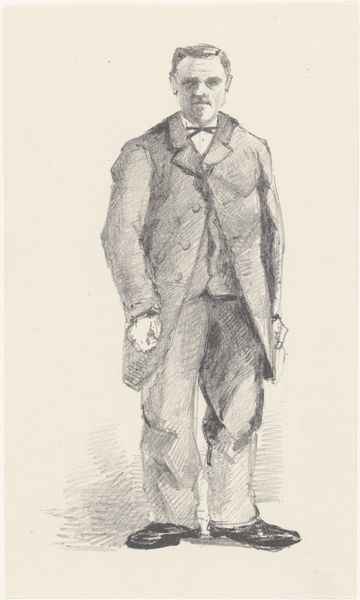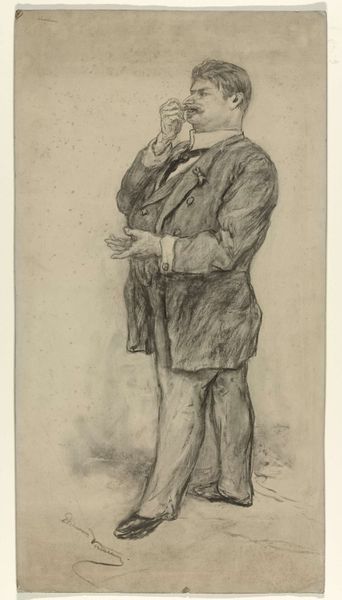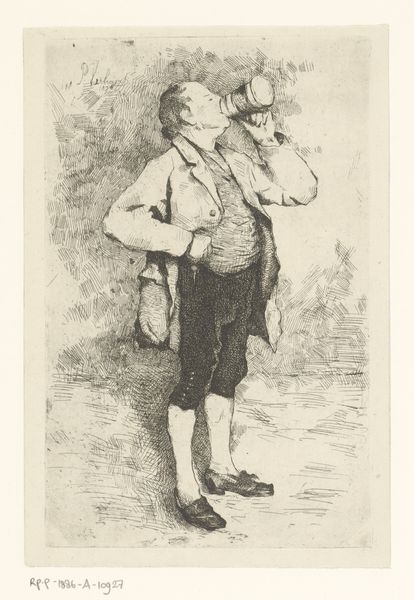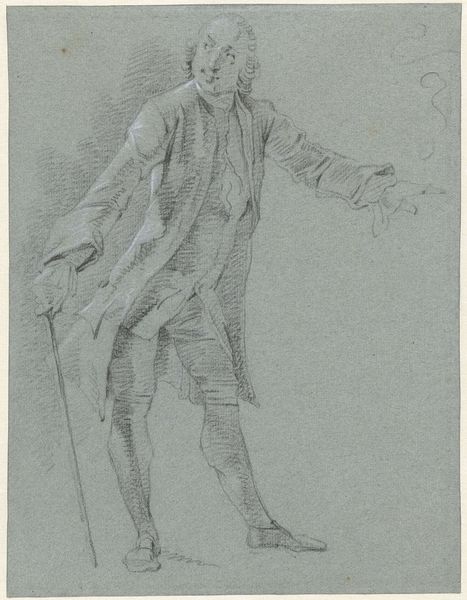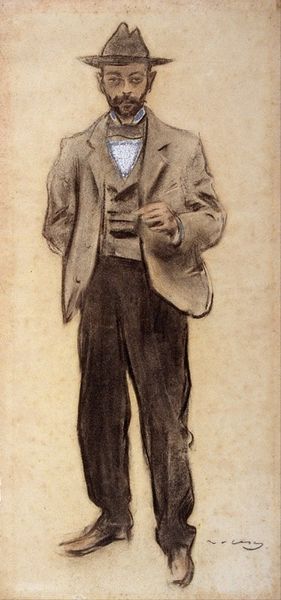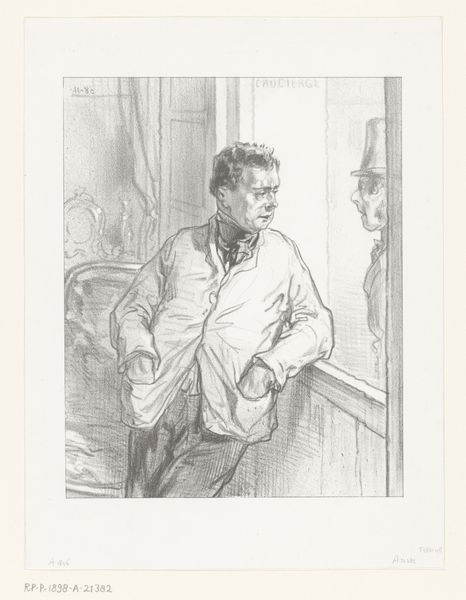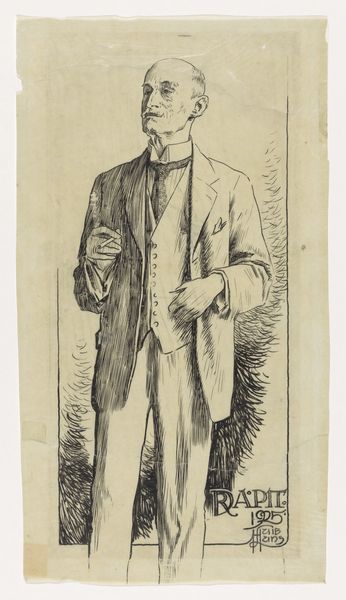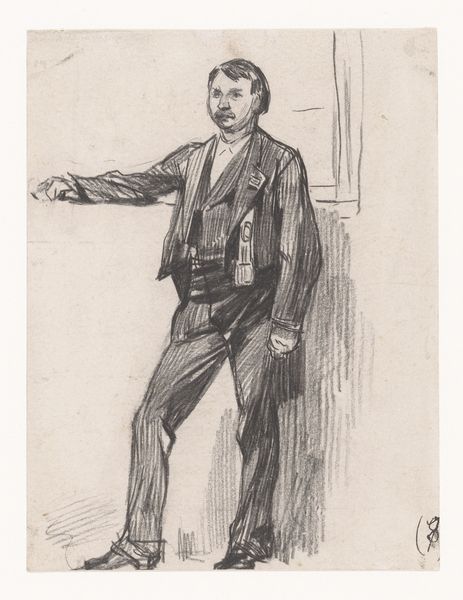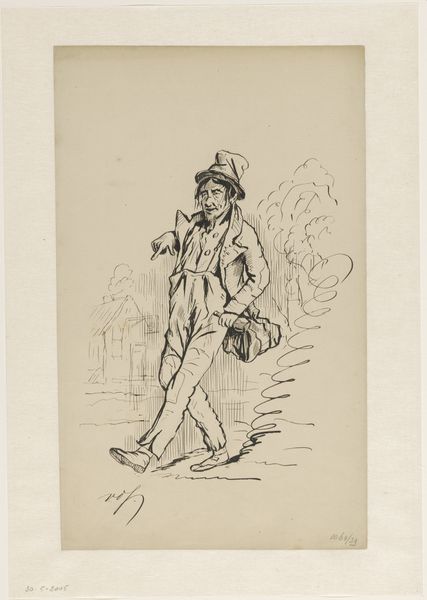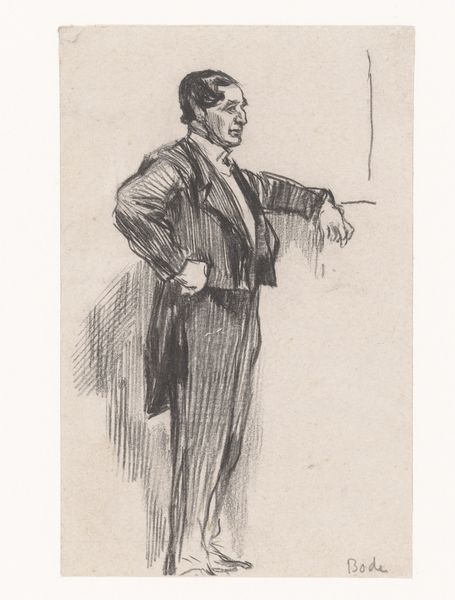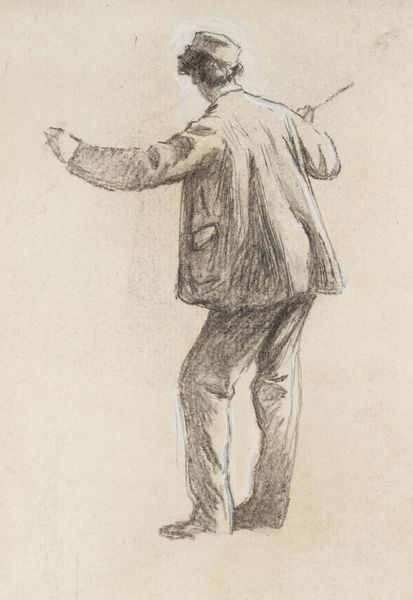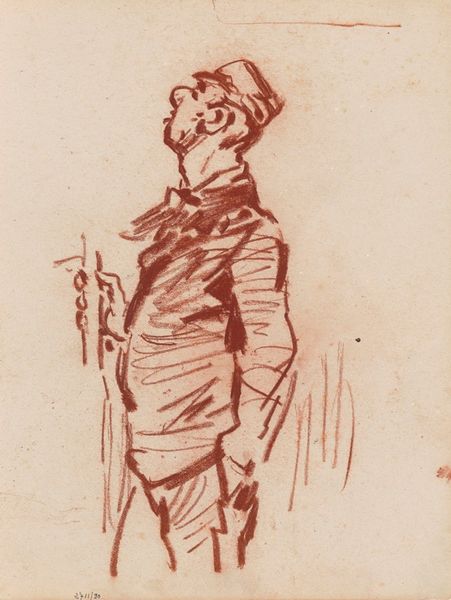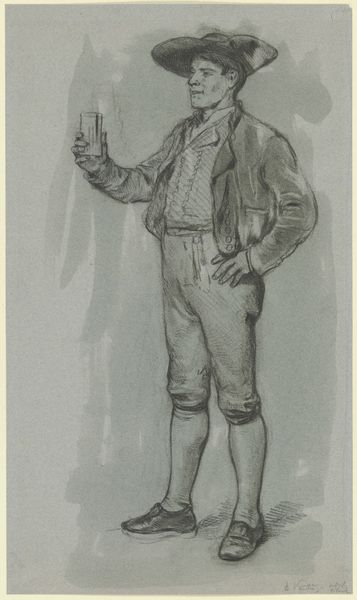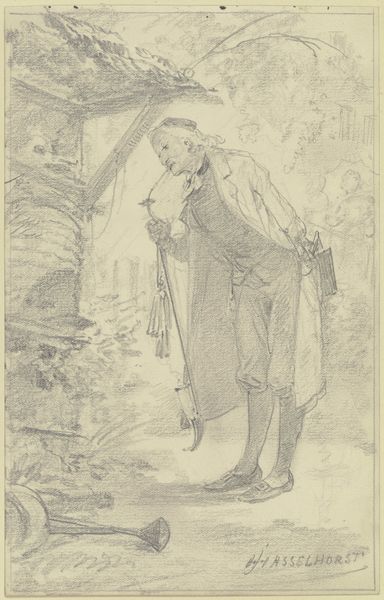
Dimensions: 17 11/16 x 12 7/16 in. (44.93 x 31.59 cm) (sheet)
Copyright: Public Domain
This is a lithograph by Paul Gavarni titled, Le cineraria candidissima. Gavarni made it by drawing on a flat stone with a greasy crayon, then transferring that image to paper. Lithography allowed artists like Gavarni to produce images more quickly and cheaply than traditional etching, and this fueled the explosion of print culture in 19th-century France. The soft, grainy texture of the lithographic crayon gives the figure a delicate, almost dreamy quality, and the technique’s potential for mass production also democratized art, making it more accessible to a wider audience. But let's not forget the labor involved. From the quarrying of the lithographic stone, to the skilled hand of the printer, this image embodies the changing landscape of work in an industrializing world. Gavarni's choice of lithography wasn't just about aesthetics; it was a reflection of the social and economic forces shaping his time. This challenges the conventional boundaries between high art and the everyday realities of production and consumption.
Comments
No comments
Be the first to comment and join the conversation on the ultimate creative platform.
